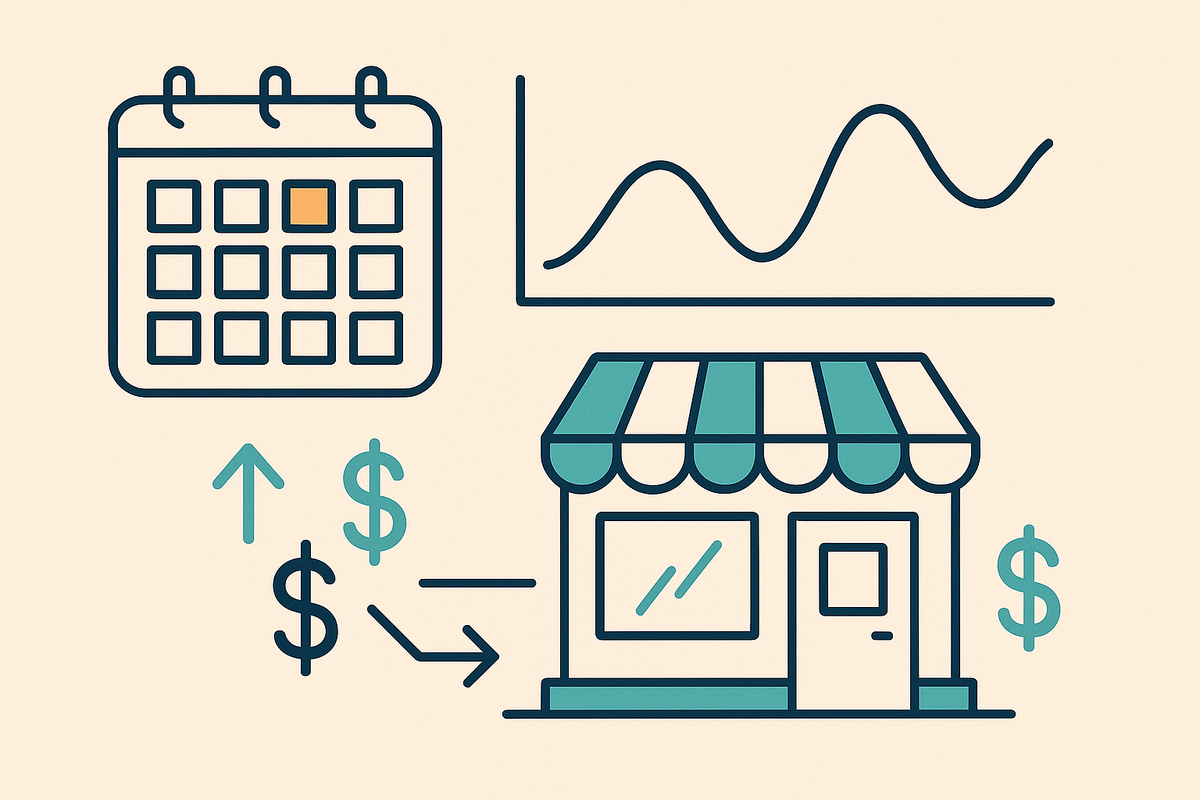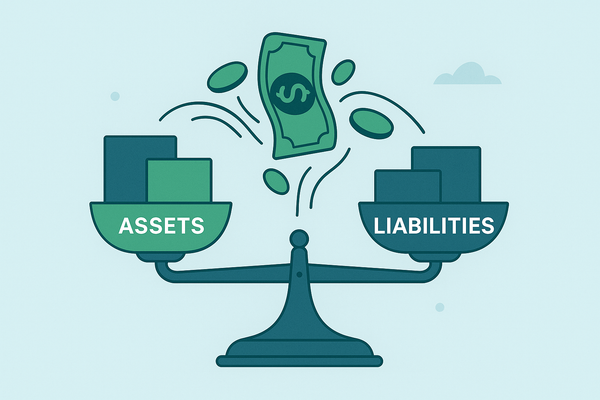How Seasonality Affects Cash Flow (and What You Can Do About It)

Introduction
Ever felt like your business is on a rollercoaster—flush with cash one month, then scraping by the next? You're not alone. Many small business owners experience cash flow fluctuations, not because of bad planning, but because of something more fundamental: seasonality.
Whether you're running a landscaping business that booms in summer or a retail shop that thrives in December, seasonal changes can make or break your financial stability. The good news? With the right strategies, you can prepare for the lean months and make the most of your peak seasons.
In this post, we'll unpack how seasonality affects cash flow, the common pitfalls to watch for, and smart tactics to smooth things out. Let’s dive in.
What Is Seasonality in Business?
Seasonality refers to predictable patterns in customer demand throughout the year. These fluctuations can be driven by:
- Weather (e.g., snow removal in winter, HVAC repair in summer)
- Holidays (e.g., retail spikes in November/December)
- Industry cycles (e.g., tax season for accountants)
- Tourism patterns (e.g., peak seasons in travel destinations)
These shifts affect sales, inventory needs, staffing, and—most importantly—cash flow.
Why Seasonal Cash Flow Swings Matter
If your income fluctuates while your expenses stay steady (think rent, salaries, software subscriptions), you may face:
- Short-term cash shortages during slow periods
- Overstocking or understocking due to misaligned inventory planning
- Late payments to suppliers or employees
- Missed growth opportunities from poor timing or capital constraints
According to QuickBooks, nearly 60% of small business owners experience cash flow issues at least once a year—and seasonality is often a root cause.
Common Cash Flow Challenges Caused by Seasonality
Here are some pitfalls that catch many small businesses off guard:
- Overreliance on peak season revenue
- Failing to forecast off-season expenses
- Delayed payments from peak-season customers
- Excess hiring or inventory buildup
- Lack of financing options when you need them most
Knowing these risks helps you shift from reactive to proactive.
6 Smart Strategies to Manage Seasonal Cash Flow
You can’t eliminate seasonality—but you can outsmart it. Here’s how:
1. Map Out Your Seasonal Cash Flow Calendar
Track your cash inflows and outflows month-by-month for the past 1–2 years. Identify trends and use them to create a rolling 12-month forecast. Include:
- Revenue projections by season
- Fixed vs. variable costs
- Anticipated slow periods
👉 Tip: Use accounting software like QuickBooks or Xero to generate reports easily.
2. Create a Cash Reserve During Peak Months
Set aside a percentage of your high-season profits to cover leaner months. Think of it as your business’s emergency fund. A good rule of thumb is 2–3 months’ worth of operating expenses.
3. Adjust Staffing and Inventory Smartly
If your business allows, scale your staffing (e.g., part-time, contract workers) or inventory in sync with your revenue cycle. Avoid tying up cash in excess stock or year-round salaries if you don’t need them.
4. Negotiate Flexible Vendor Terms
If you know cash will be tight in certain months, talk to suppliers about extended payment terms or seasonal discounts. Many are open to negotiation—especially with loyal customers.
5. Offer Pre-Season Discounts or Subscriptions
Boost cash flow before the slow season by selling gift cards, offering early bird deals, or creating subscription models. For example, a landscaping company might sell discounted “Spring Packages” in January.
6. Secure a Line of Credit Before You Need It
Apply for financing (like a business line of credit) during your strong seasons, when your financials look healthiest. It’s easier to get approved and ensures you have backup funds ready if needed.
Quick Cash Flow Readiness Checklist for Seasonal Businesses
Ask yourself:
✅ Do I know my peak and off-peak months?
✅ Have I forecasted next quarter’s cash flow based on past trends?
✅ Am I saving enough during busy times?
✅ Do I have a backup plan for lean months (credit, reserve)?
✅ Can I offer off-season services or promotions?
If you answered “no” to any of these, now’s a great time to make a seasonal cash flow plan.
Conclusion
Seasonality is a reality—but it doesn’t have to control your business. By understanding your cycles, forecasting carefully, and preparing ahead, you can maintain healthy cash flow all year round.
Remember: it’s not about avoiding the ups and downs—it’s about riding them smoothly with a plan in place.
📥 Want to take the guesswork out of planning for seasonal shifts?
Sign up 👇and Download our FREE Monthly Cash Flow Forecast Template to get started today.




